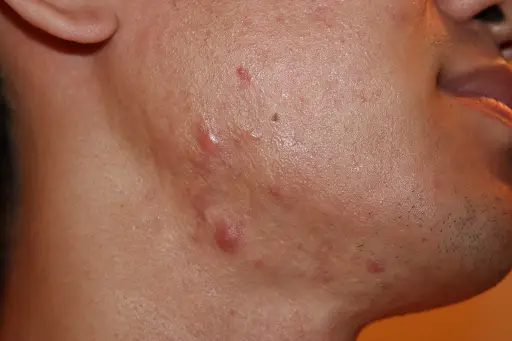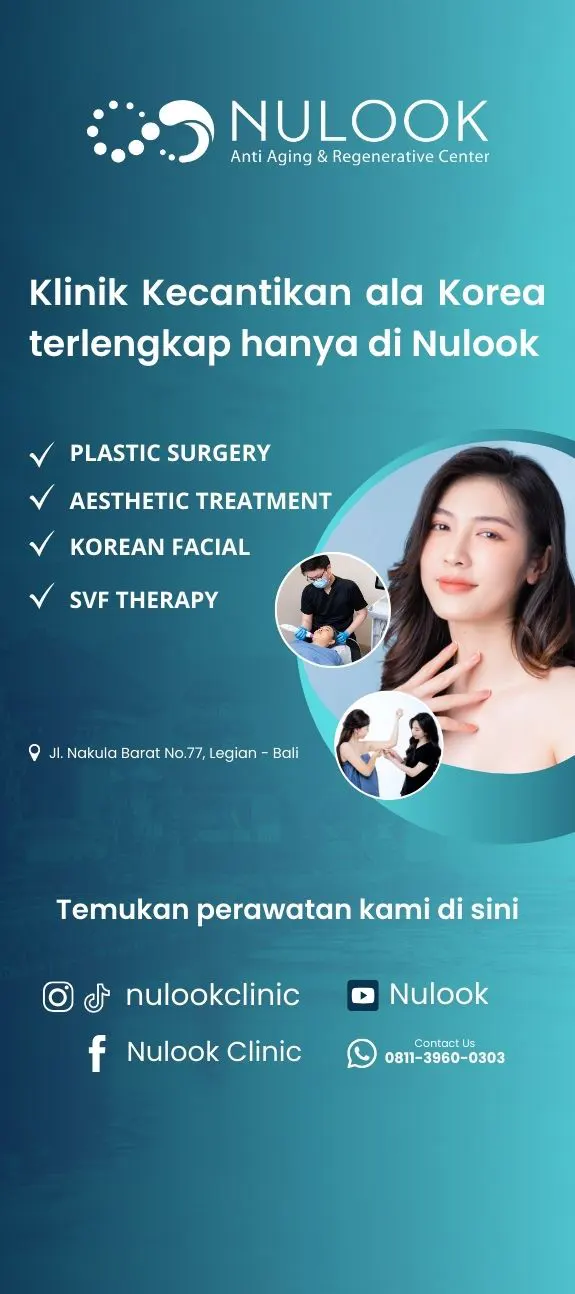How to Effectively Remove Keloids on the Face
Author: Nulook ExpertiseReview by: -Keloids on the face can be an issue that affects appearance and confidence. A keloid is an overgrown scar tissue that forms after a wound heals, often making it difficult to remove. However, there are several ways to remove keloids on the face, including natural methods and medical treatments. It is essential to understand the appropriate type of treatment to reduce keloids effectively without causing side effects. Let’s take a closer look at some ways to remove facial keloids below.
Read Also: 9 Effective Ways to Treat Itchy Acne
Causes of Keloids on the Face
A keloid is the growth of scar tissue due to an excessive healing process. Keloids on the face can be caused by several factors, and understanding these causes is crucial in preventing them. Here are some common causes of keloids that may appear on the face:
1. Skin Trauma
Trauma or injury to the skin, such as cuts, burns, or after surgery, can trigger keloid formation. When the skin is damaged, the body attempts to heal itself by producing collagen. If there is an excess of collagen, keloids can form. Keloids tend to appear more commonly in sensitive areas like the face because the skin there is thinner and more vulnerable.
2. Genetic Factors
Genetics also play a role in the formation of keloids. If your family members have a history of keloids, you are more likely to experience them as well. Certain genes can influence how the body reacts to injury, including how much collagen is produced during healing. Therefore, understanding your family’s health history can help in recognizing your risk of developing keloids.
3. Age and Gender
Age and gender can affect a person’s likelihood of developing keloids. Typically, keloids are more common in teenagers and young adults, especially in individuals with darker skin tones. Studies show that hormones and skin changes over time can impact the healing process, increasing the likelihood of keloid formation.
4. Skin Conditions
Some skin conditions, such as acne, dermatitis, or infections, can increase the risk of keloid formation. When the skin becomes irritated or inflamed due to these conditions, the healing process may be disrupted, leading to excess collagen production and keloid formation. Thus, maintaining healthy skin is crucial in preventing keloids.
5. Hormonal Changes
Hormonal changes, such as those experienced during puberty, pregnancy, or while using hormonal contraceptives, can also contribute to the formation of keloids. Hormones can affect how the body heals wounds, and hormonal fluctuations may trigger the development of excessive scar tissue. Understanding the connection between hormones and skin health can help you take preventive measures.
Read Also: 10 Best Face Lifting Treatments for Facial Rejuvenation
6. Chronic Skin Conditions
Chronic skin conditions, such as psoriasis or eczema, can cause ongoing inflammation that disrupts the healing process. When the skin is repeatedly irritated, the body tries to repair the damage by producing more collagen, which can result in keloid formation, particularly after multiple flare-ups. Properly managing these skin conditions is key to preventing keloids.
7. Infections
Infections in wounds or specific areas of the skin can also increase the risk of keloid formation. When an infection occurs, the body responds by speeding up the healing process, which may lead to an overproduction of collagen. Keloids often form after the infected skin has healed. Preventing infections by keeping wounds and skin clean is a critical step in reducing the risk of keloid development.
8. Race and Skin Color
Race and skin color also influence the likelihood of developing keloids. Research shows that keloids are more common among individuals with darker skin, such as Asians, Africans, and Hispanics. This is related to genetic and biological skin responses to injury and healing. Therefore, if you belong to a more vulnerable racial group, it's important to be extra cautious and take preventive steps to reduce the chances of developing keloids.
Read Also: 7 Post-Facial Restrictions You Need to Be Aware Of
Eliminate Facial Keloids with Keloid Injections at Nulook
Facial keloids can disrupt your appearance and reduce your confidence, but there is an effective solution through keloid injections at Nulook. Keloid injections are a non-surgical procedure aimed at reducing the size, texture, and color of keloids. Doctors will inject specialized medication, such as corticosteroids, directly into the keloid tissue to inhibit excessive growth and relieve inflammation. This procedure is safe, quick, and does not require long recovery times.
The injection process is usually done gradually, depending on the size and severity of the keloid. Each injection session takes only a few minutes, and treatment results can be seen within a few weeks after several injections. Before starting treatment, it is highly recommended to consult with a doctor at Nulook to evaluate the keloid condition and determine how many sessions are needed to achieve optimal results.
With modern facilities and a special focus on patient needs, Nulook is committed to providing the best results in treating keloids, helping you regain your confidence and desired appearance. If you are looking for an effective and safe solution to remove keloids on your face, visit Nulook now and schedule an appointment today.
References:
- https://www.mayoclinic.org/diseases-conditions/keloid-scar/symptoms-causes/syc-20520901#:~:text=A%20keloid%20scar%20is%20a,in%20more%20than%20one%20place.
- https://www.aad.org/public/diseases/a-z/keloids-treatment


